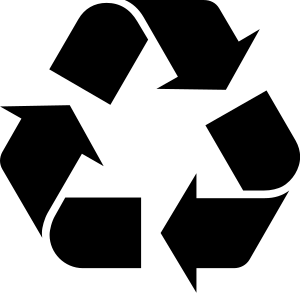Waste sorting



Waste sorting is the process by which waste is separated into different elements.[1] Waste sorting can occur manually at the household and collected through curbside collection schemes, or automatically separated in materials recovery facilities or mechanical biological treatment systems. Hand sorting was the first method used in the history of waste sorting.[2]
Waste can also be sorted in a civic amenity site.
Waste Segregation means dividing waste into dry and wet. Dry waste includes wood and related products, metals and glass. Wet waste, typically refers to organic waste usually generated by eating establishments and are heavy in weight due to dampness. Waste can also be segregated on basis of biodegradable or non-biodegradable waste.
Landfills are an increasingly pressing problem. Less and less land is available to deposit refuse, but the volume of waste is growing all time. As a result, segregating waste is not just of environmental importance, but of economic concern, too.
Waste Sorting Machine is belong to waste recycling equipment, it is municipal solid waste automatic separation system in materials recovery facilities. MSWsorting can get recycling materials separated from municipal solid waste, include glass, ferrous metal, aluminum, plastics, paper. Material is sorted to specifications, then shredded, compacted, baled for sale in market. Because the volume of waste is growing all time, as a result, waste sorting solutions is not only have economic value, but also have environmental importance.[3]
Methods
Waste is collected at its source in each area and separated. The way that waste is sorted must reflect local disposal systems. The following categories are common:[4]
- Paper
- Cardboard (including packaging for return to suppliers)
- Glass (clear, tinted – no light bulbs or window panes, which belong with residual waste)
- Plastics
- Textiles
- Wood, leather, rubber
- Scrap metal
- Compost
- Special/hazardous waste
- Residual waste
Organic waste can also be segregated for disposal:
- Leftover food which has had any contact with meat can be collected separately to prevent the spread of bacteria.
- Meat and bone can be retrieved by bodies responsible for animal waste
- If other leftovers are sent, for example, to local farmers, they can be sterilised before being fed to the animals
- Peel and scrapings from fruit and vegetables can be composted along with other degradable matter. Other waste can be included for composting, too, such as cut flowers, corks, coffee grindings, rotting fruit, tea bags, egg- and nutshells, paper towels etc.
Chip pan oil (fryer oil), used fats, vegetable oil and the content of fat filters can be collected by companies able to re-use them. Local authority waste departments can provide relevant addresses. This can be achieved by providing recycling bins.
By country
In Germany, regulations exist that provide mandatory quotas for the waste sorting of packaging waste and recyclable materials such as glass bottles.[5]
In Denpasar, Bali, Indonesia, a pilot project using an automated collecting machine of plastic bottles or aluminium cans with voucher reward has been implemented in a market.[6]
See also
References
- ↑ Garbage sorting plan | Shanghai Daily
- ↑ Aluminum Recycling, Second Edition - Mark E. Schlesinger. pp. 75-76.
- ↑ Waste Sorting Machine Working Principle by article source from MSWsorting, 2010 at China
- ↑ Martin F. Lemann: Waste Management, 2008, p. 80, ISBN 9783039115143, Peter Lang
- ↑ Germany, Garbage and the Green Dot: Challenging a Throwaway Society - Bette K. Fishbein. pp. 16-17.
- ↑ "Satu-satunya di Indonesia, Mesin Sampah Keluarkan Voucher ada di Denpasar". July 31, 2015.
External links

- Municipal Solid Waste Sorting (MSWsorting.com)

